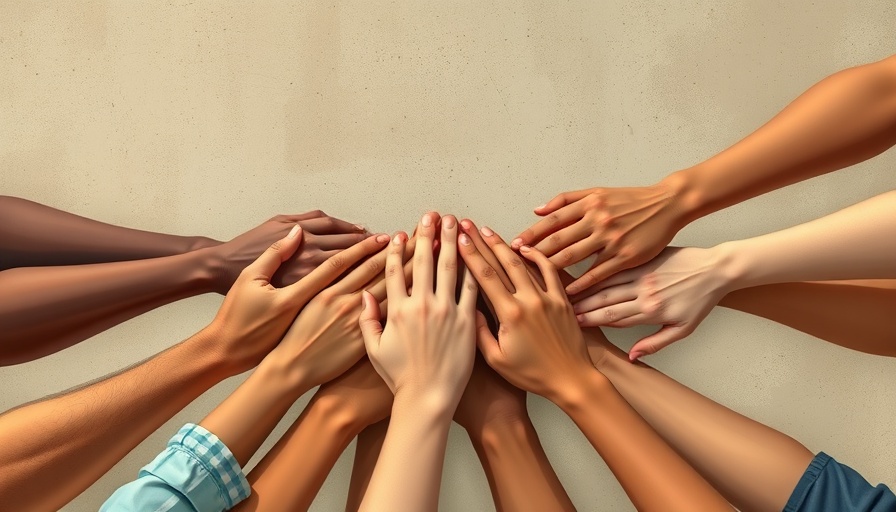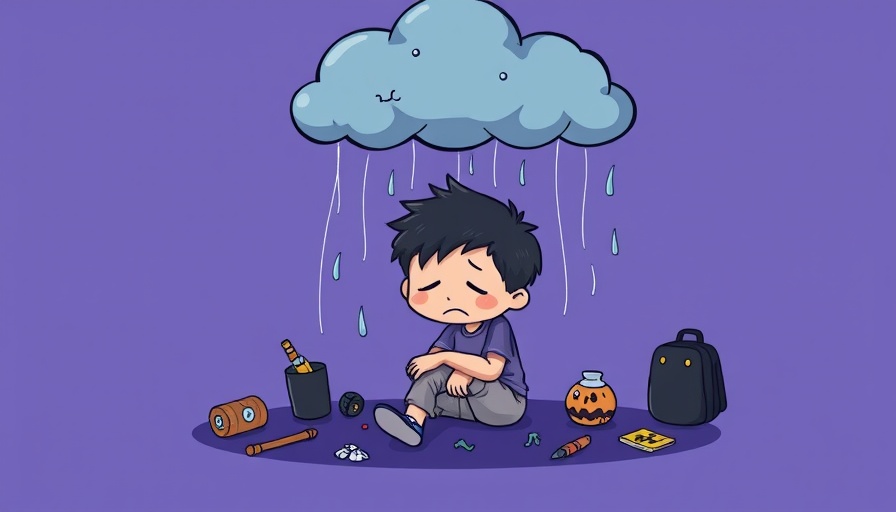
The Journey of Mindful Racial Healing Begins
The call to engage deeply with issues of race and racism has never been more urgent in today's society. With Tovi Scruggs-Hussein at the helm, the exploration of these topics through mindfulness serves as a beacon guiding individuals and the broader community toward understanding, compassion, and meaningful change. Scruggs-Hussein, a trailblazer named as one of the 2021 Powerful Women of the Mindfulness Movement, emphasizes the necessity of emotional intelligence and self-awareness as tools for healing our racial wounds.
Understanding the Foundations of Racial Healing
Scruggs-Hussein's approach to mindful racial healing is uplifting and resonates deeply with anyone feeling the weight of societal grievances. Central to this journey is the understanding that systemic racism affects all individuals—both on the receiving end and those who perpetuate it through unconscious biases. By addressing the emotional nature of our experiences around race, she encourages a shift from viewing racial issues solely through a polemical lens to one of deeper connection and engagement.
This understanding aligns beautifully with insights drawn from the Momentous Institute, where the focus is placed on introspection amidst the external turmoil. Mindfulness becomes crucial in this context, allowing individuals to confront both their emotions, including rage and grief, and dismantle their own biases.
Mindfulness as a Tool for Connecting Humanity
Mindfulness offers practical tools for individuals embarking on their racial healing journey. Scruggs-Hussein's series includes guided meditations specifically crafted to facilitate introspection and encourage understanding—inviting participants to sit with their discomfort and engage in reflective practices. This incorporation of meditation is not merely beneficial; it equips individuals with strategies to manage emotional overload while fostering a climate of compassion.
A significant aspect of Scruggs-Hussein's teachings is the acknowledgment that everyone, regardless of race, is impacted by societal inequalities. The systemic nature of racism means that even those who embody privilege suffer due to disconnection. This key insight underscores the importance of creating safe mixed-race spaces where healing can flourish.
The Role of Community in Racism
Community engagement forms a cornerstone of racial healing, according to both Scruggs-Hussein and the Momentous Institute. Coming together allows individuals of varying backgrounds to learn from one another and confront their differences with an open heart. This process is often fraught with discomfort, as it challenges deeply ingrained notions but is also where the most significant growth takes place.
Collectively, participants can strengthen their resilience against systemic oppression. The practice of leading with love—through courage, compassion, and vulnerability—becomes essential. Reflecting on personal biases within a community context provides a platform for deeper learning, expanding the scope of individual healing into a communal ethos.
Addressing Psychological Barriers to Healing
A critical step in the racial healing process is confronting the emotional barriers that prevent individuals from engaging fully. The struggle often lies in the powerful emotions of shame and guilt, which can inhibit progress toward understanding and healing. Scruggs-Hussein emphasizes that working through these emotions with mindfulness provides pathways for growth.
Racism's psychological toll creates a cycle of disconnection that hinders any progress. Hence, individuals are encouraged to examine their feelings, whether positive or negative, and to understand that these emotions are not applicable to individuals as a whole. This perspective is vital for transforming shame into self-compassion, allowing people to acknowledge their humanity and connect more genuinely with others.
Practical Insights for Action
What does effective racial healing look like? Scruggs-Hussein outlines actionable insights that individuals can adopt to engage meaningfully in this vital work. Creating safe spaces where uncomfortable conversations about race can occur is paramount. This involves actively listening without defensiveness, embracing discomfort, and fostering environments where vulnerability is welcomed.
Aiding this journey are journaling prompts that invite introspection. Reflecting on personal experiences with diversity, equity, inclusion, and belonging (DEI) challenges not only facilitates personal growth but also cultivates a community focus on transformative practices. Acknowledging the historical context of racism in education, as outlined in the articles, further bolsters the argument for systemic change through mindful engagement.
A Call to Action: The Importance of Engaging in Mindful Racial Healing
The journey toward racial healing is ongoing and requires a commitment from all individuals. It’s not only about understanding others but also about developing a robust relationship with oneself. As you navigate this path, consider incorporating mindfulness practices into your daily routine and engage in meaningful conversations about race and racism.
Action is vital; whether it’s attending workshops, seeking community discussions, or simply committing to self-reflection, each small step contributes to a greater collective effort. The rewards of these efforts reach far beyond individual healing—they can extend to the societal level, promoting a more equitable and connected world for future generations.
Join the mindfulness movement in racial healing, and explore the possibilities that lie within yourself and the community. As we engage in this work, we honor our interconnectedness and pave the way for a transformative future.
 Add Row
Add Row  Add
Add 




Write A Comment